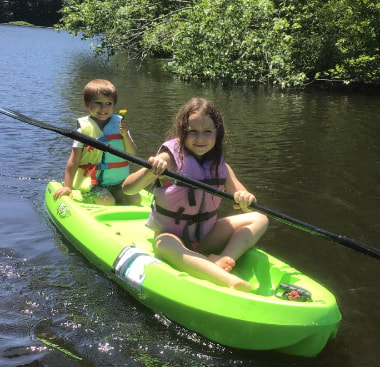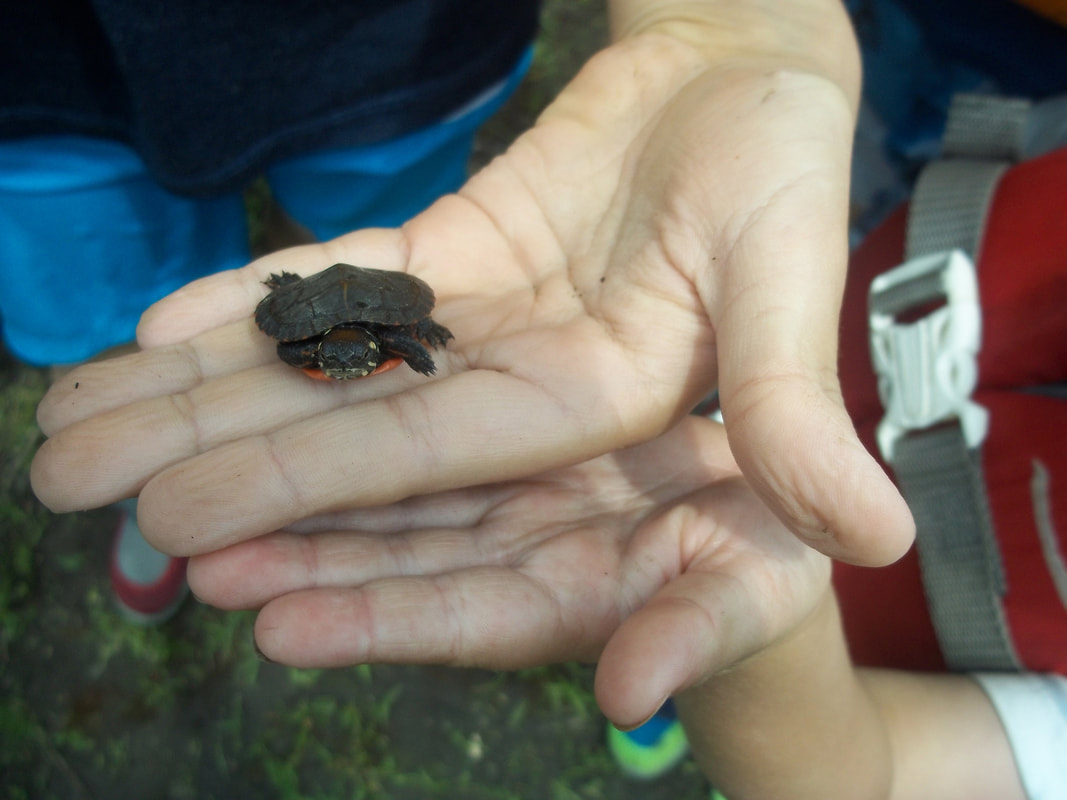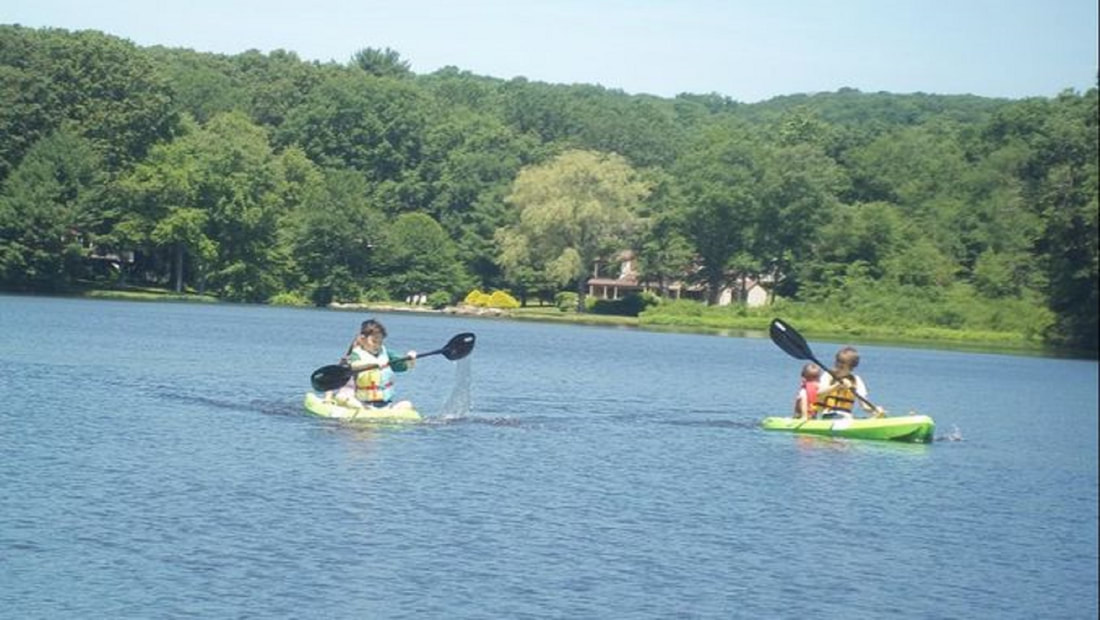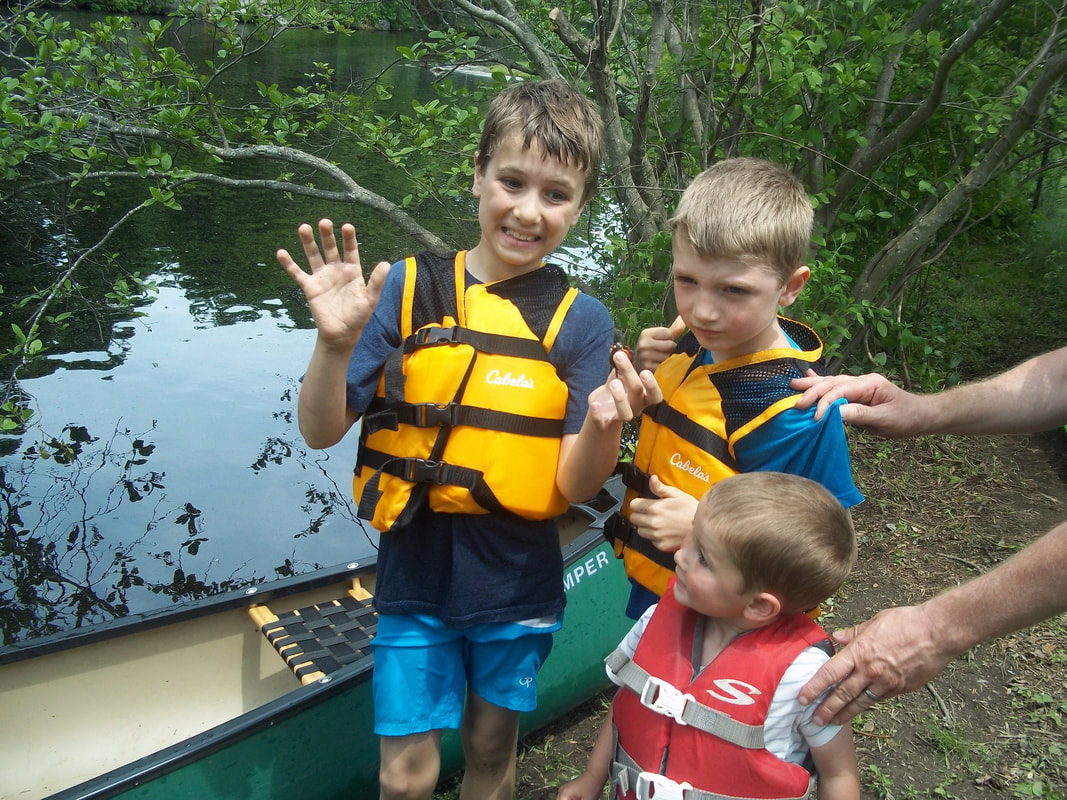|
How old do kids need to be to learn to kayak? Kids age 5 and up can start paddling a child-sized kayak. From age 5 to 11 kids easily paddle a kayak short distances on their own with an appropriately sized kayak, paddle, and the right water conditions for their age. How far can young kids paddle a kayak? Kids younger than 5 practice paddling a child-sized kayak in a swimming pool or non-moving water for a few minutes at a time. Kids age 5 to 7 practice paddling a child-sized kayak in short intervals and for short distances of less than a quarter a mile. Kids age 7 to 9 paddle a child-sized kayak up to half a mile at a time. Kids age 9 to 11 learning to kayak can paddle half a mile or more on a child-sized kayak, and by age 12 can paddle a mile or more and transition to larger kayaks. Learning to kayak is easy and fun. It is an accessible and affordable sport for families with young children. Most people don't realize that young children can kayak and that not all kayaking is done in rapids or on the ocean. Most families paddle on calm lakes, ponds and in marshes where the water is slow moving, and the setting is peaceful. The experience is richly rewarding. Paddling comes naturally to kids and gives them a new way to explore nature. There are many types of water and types of kayaking. Many people think only of ocean and whitewater kayaking when they think of kayaking and may only think of sit-inside kayaks. What type of kayak is easiest for kids to learn on? Kids should start on calm water, and sit-on-top kayaks are generally easier to learn on than sit-inside kayaks. Kids can begin paddling very young on calm water with the right type of kayak, and the right size of kayak for their age. Whether they are riding with you on a tandem kayak, or paddling their own sit-on-top or sit-inside vessel, read on for suggestions of when kids are ready to try different paddling experiences. If you are very new to paddling sports and are not sure what a sit-inside or sit-on-top kayak is, you may also want to read Kayak Options For Kids, Sit-inside, Sit-on-top, or Inflatable. Age Guidelines and Kayaking Options:
These guidelines are for kayaking on calm inland water. For whitewater and ocean kayaking, read my suggestions below thoroughly. Continue reading for more in-depth age-by-age tips, as there are so many types of kayaks and kayaking experiences. It seems the most prevalent questions about kayaking for parents looking into the sport revolve around what age kid can do specific things with a kayak. Let's get into it and cover all the ages, variable and questions regarding kids and kayaking. Child-sized kayaks: little kids can easily kayak on special kayaks made for tiny kids! 5-11 years old is the best age to teach kids to kayak on calm water on child-sized kayaks
What's below: Scroll down to read specific tips for the age you are looking for: Here is what's coming below: Babies in kayaks 2 and 3-year old guidelines 4-year-old guidleines 4 to 7-year-old guidelines 6-year-old guidelines 8-year-old guidelines 9 to 12-year olds 12 to 16-year-olds age 14 and up Let's begin with the most controversial age topic: Babies and Toddlers in Kayaks. Babies
4-year-old
4 to 7-year-old Kayaking Options
5-year-old
6-year-old
8-year-old
9 to 12-year-old
12 to 16-year-old
14-years-old and up
Tips for Beginners Duffer is a non-paddling guest sitting somewhere in the boat, usually the middle. The bow paddler is the person in the front seat of a tandem kayak or canoe, while the stern paddler is the one sitting in the back. There needs to always to be someone who is capable of paddling in the stern (back) if you have a child as the bow paddler (someone needs to be able to paddle, right?). Kids and beginners need to always be in the front of the kayak so the more experienced paddler in the back can give directions and steer the boat. Kids who grow up in the water with parents who kayak and who brought them on their kayaks from a young age are not going to match these guidelines. The above guidelines are for beginners on flat water (lake, pond, marsh, etc.). These suggestions are not for whitewater kayaking. For river kayaking or whitewater, remember, too much too soon can scare very young kids and turn them away forever, and if you are not at all experienced as the parent, you need a guide or teacher to work with your group before you can take yourself or your kids down a river safely. You CAN, however, take your kids and yourself with NO experience to a calm lake with life jackets and recreational kayaks and play around while you get the hang of it. This is especially easy with sit-on-top kayaks, as there is no risk of capsizing or taking on water. Start slow and have fun and be safe. Soon you will be ready for more but take it one step at a time, especially when kids are involved and if you are new to all paddling and water sports. The above are only general guidelines meant as a starting place. There are MANY FACTORS, such as the development of the child, SKILL and EXPERIENCE of parents, TYPE OF WATER KAYAKING ON, CHILD'S INDIVIDUAL NATURE, TYPE of kayak, and WEATHER. These are the most common questions about age and kayaks I hear and a quick answer: What age should I buy my kid a kayak?
Can a 10-year-old kayak in whitewater?
Can you take babies and toddlers kayaking?
How old does my baby need to be to take with me in my solo kayak (for those who ignored the above question and answer)?
Can I tandem kayak with a baby or toddler?
How old do you have to be to paddle a kayak?
*Safety Legal Disclaimer: Everything on this site is a matter of opinion, gathered from experience and many hundreds of other's opinions, and should not be taken as professional advice. Please use the suggestions as a starting place to conduct your own research and make decisions based on what is safe for you and your family. Above all, I urge you to make smart choices and keep your kids and yourself safe. Kayaking is loads of fun, but you need to use your common sense and always err on the side of safety when there is any question of skill level, weather, etc. HAPPY KAYAKING! Comments are closed.
|
Categories
All
Our FamilyAlmost six years ago we moved into a little New England house with a river in the backyard and quickly discovered the joy of kayaking kids. |
You may also be interested in:
Legal Information: This site is meant as a log of our family's opinions and experiences, but is in no way a comprehensive safety guide for kayaking. Kayak at your own risk and research well anything pertaining to your family's safety. This site shares our experiences and products we have tried and researched. There are affiliate links used to reference the products being reviewed.


 RSS Feed
RSS Feed



